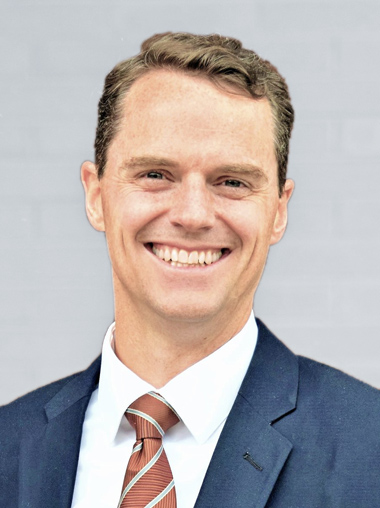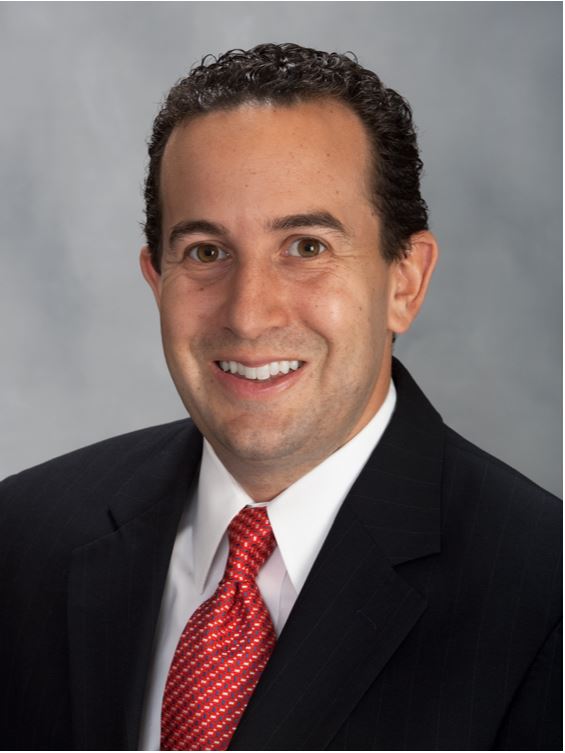An interview by B&D with Rob McKenna, director of B&D’s Energy Advisory Practice, and Jeffrey Turner, LEED® AP, executive vice president for B&D and co-leader of the firm’s higher ed practice. Bios below.
Energy strategy is a frequently overlooked component of successful campus operation. A strong energy strategy can help administrators meet their fiduciary duties while advancing their campus’s sustainability goals. Why is energy planning so important, and why are so many campuses still in the dark when it comes to modern energy planning? What role might partnerships play? Learn more.
Let’s start with discussing some trends in higher education related to energy systems. Can you talk a bit about deferred maintenance and how schools have been addressing it?
Turner: Many of our clients have been around for hundreds of years, and they have not kept their systems or facilities up to where they need to be. The resultant deferred maintenance is significant and is generally addressed with a piecemeal approach—fix this roof, fix that boiler. But when you’re not looking comprehensively—when you’re not establishing a larger infrastructure strategy—you’re just throwing good money after bad. As more and more schools feel the pain of that, they’re seeing the value in strategic investments in energy systems.
McKenna: Exactly. Many schools haven’t reinvested in their energy system for decades and have only been patching or doing little upgrades. Meanwhile the world has moved on to an operational paradigm and technologies that are one or two generations more advanced. These technologies operate more efficiently and make decarbonization possible—the move away from greenhouse gas emissions and toward electrification. The issue of deferred maintenance can create an opportunity if handled strategically—the opportunity to invest in new technologies that help the bottom line and help the planet, rather than simply replacing with similar assets.
Let’s turn to the trend of partnering with the private sector on energy systems. Do you expect to see more partnerships in the coming years? About the same? Fewer?
Turner: With limited resources and limited funding, municipalities, universities, and organizations like health systems are increasingly seeing that working together can develop the greatest value. We talk a lot about P3s, P4s, even P5s. Syracuse University, for example, has an energy deal where they provide energy to two local hospitals. This is a true partnership with many stakeholders. We’ll see more and more of this.
McKenna: Agreed. And regarding energy, specifically, colleges and universities are increasingly seeing that while energy reliability and supply is critical to their mission, it’s not mission-centric. As a result, they’re realizing that it may be advantageous to transfer that risk to an outside entity, to free up resources for their primary mission with the co-benefit of greater budget certainty.
Turner: When schools decide to focus on their core mission of teaching and research, we often see a perspective arise of, “Let’s see if other folks can do some of this stuff better, faster, and cheaper.” Then when a big project like Ohio State gets press and schools see a billion-dollar check, that carries across the entire industry and people pay attention and want to know what it might mean for them. At the same time, more and more funding sources, capital providers, owners, and operators have become interested in higher ed infrastructure in the last 5 or so years. Big companies in the private sector started focusing on higher ed; they got around to marketing and educating on what they can offer—that Ohio State press is no coincidence! So you have this educating of the marketplace happening at the same time that higher ed has hit a tipping point where they just can’t keep up. The Bandaid efforts are not sufficing. So some of the movement toward partnering is from the private sector, and some is schools saying, “We can’t do this alone.”
You mentioned the large energy-related agreement at The Ohio State University. The University of Iowa is another such example. What are the pros and cons of transactions like those vs. other types of agreements—starting with pros?
Turner: Those large-scale energy projects are concession agreements. Ohio State decided to exit the energy business more broadly. The majority of deals, though, have been smaller—just solar panels, say. They haven’t been as comprehensive. But yes, let’s look at the pros of a comprehensive agreement.
First, you get an upfront payment that goes to your endowment. Second, you work with a publicly traded, large corporation doing state-of-the-art research, and your school benefits from the whole breadth of that R&D. These large, private companies have the ability to bring down costs and offer best-in-class service. Meanwhile, you’re tackling deferred maintenance.
McKenna: Another pro of large-scale concession agreements is that engaging in a comprehensive partnership imposes a deliberate discipline that isn’t necessarily there when self-operating. It can be easy to forget that you, as an administrator of a campus, own and operate a utility business. You may not see yourself as a utility business executive, but you are one. And if you don’t take that perspective, you may be running your operation sub-optimally. If you get yourself into the mindset of learning to view the energy systems as a strategic asset, and then operate them accordingly, you’ll create significant value.
To be fair, it’s the mindset shift that produces the value I’m talking about here and partnerships can enable viewing energy systems in a value-optimizing way. Higher ed tends to focus on first costs—”We can’t afford PV panels,” say—but it’s the lifecycle costs that matter, given that operating costs can dwarf first costs. The partnership market typically analyzes from a lifecycle perspective. The first cost is not as much of an impediment.
What are some cons of large-scale energy agreements?
Turner: Cons definitely include putting yourself in the hands of private partner, which exposes you. If the lights go out in your classroom or it’s too cold, you can’t call your facilities or auxiliaries department, you have to call a private company. So there’s a concern about reputational risk, given that schools must make sure they’re providing the right services. Plus when you sign a 50-year agreement, you don’t know if the company will be around for 50 years. Lastly, the transfer of jobs from the public to private sector creates a lot of angst; that must be navigated.
McKenna: I would also point out the challenge of operational constraints. You must make sure that the agreement is right, with the right metrics and levers, and that it is an actual partnership—not just a painful thing you feel you have to live with.
There’s also a misconception that partnering gets the asset off your balance sheet. If we’re looking at Ohio State and Iowa as models of the concession agreement, their energy systems continue to be on their balance sheets. These schools didn’t actually sell their assets, they simply contracted to have someone else operate them. Meanwhile the schools are paying an annual payment every year for those services. It’s not free money. There ARE other options where you can completely divest yourself of energy and utility operations and assets if that is of interest. Additionally, energy savings performance contracts (ESPCs) and Power Purchase Agreements (PPAs), for example, continue to be legitimate, well-proven options if divestment is not of interest.
As we’ve started to talk about, from an institutional perspective, energy and utility systems are typically viewed as mission-critical, but not mission-centric. Is that the right perspective or are there alternative ways to think about energy and utilities?
McKenna: Historically, most prospective students and their families, when they visit a college or university never ask, “How is this place heated, cooled, and electrified?” If they walk in and it’s warm when it should be warm, or cool when it should be cool, and if the lights are on, they’ve been satisfied. They have no idea that hundreds of millions of dollars of assets have been deployed to make that satisfaction possible, and that tens of millions of dollars a year are spent to make that happen. Whether you run these systems efficiently or not, in an environmentally optimal way or not, historically only a small percentage of your constituents have cared. Institutions have tended to deprioritize energy and utility investments. Historically, that hasn’t been a smart move; energy and utility expenses can be 20% of a school’s non-personnel operating costs. This can be a significant lever to achieve cost savings and performance without having to sacrifice FTEs to meet the needs of the mission and campus.
Turner: Meanwhile today’s students care more about environmentally friendly operation. It’s an important part of the next generation. Many prospective students are expecting renewable energy, and want schools that are going to be leaders in these types of programs and facilities moving forward.
McKenna: Exactly. If you approach your energy strategy right, and if you run it in an environmentally optimal way, it can become a strategic asset—a showpiece that gets people excited about coming to your institution. I think about schools in the western US with solar panels all over the place, and how that kind of environmental stewardship has become the expectation of the school’s populace. When prospective students visit other schools and they don’t see that, they think, “What kind of place am I at?”
In what other ways can the energy and utility system on a campus be leveraged creatively to utilize other funding sources?
McKenna: Renewable assets have been a great visible investment and have been readily fundable with partnerships. The trick is that they’re not a sufficient investment. If you have a goal of carbon neutrality, for example, you can cover your whole campus in solar panels and get only 5–10% of your energy needs. Further investment is needed, especially in the cases where fossil fuels are required for heating.
An opportunity schools should be thinking about is: Why don’t we get donors for a new, state-of-the-art energy system? Imagine a future where instead of a central plant with a smokestack coming out of it, we now have an unmanned, automated energy plant that is built in an aesthetically pleasing way, using on-campus renewable energy to deliver highly efficient, reliable, and sustainable energy to buildings on campus. A donor may very well want to fund something like that. Further, while a new energy system can be in the same cost range as a high-end building, it is different than a building; the energy system becomes a source of value creation for the institution for years to come, rather than the ongoing liability that buildings tend to be. Donor funding is thus another investment model to consider.
Finally, COVID remains on all our minds. Any closing thoughts on the matter?
McKenna: I’ve worked with colleges and universities in energy and utility planning for 14 years now, and something I’ve seen again and again is that when financial times get hard, like now with COVID, all of these aspirational discussions get set aside. When financial constraints hit, carbon neutrality and sustainability are no longer priorities. This does not need to be the case. Every institution should be looking for economically viable opportunities that also advance environmental stewardship.
The good news is there are many viable opportunities to invest in. Take an energy efficiency program, for example. When done well, a school should be able to avoid 25–40% of the operating costs of their energy system. Unfortunately, there’s execution risk associated with efficiency investments and they are not typically evaluated in a comprehensive, strategic way. As a result, too often the strategic investments are not made. To do it well, the organizational and management structure has to be right. When done well, it’s incredible to see what can result. As an example, a typical endowment has realized a 5% return on investment in recent years, while investments in campus energy efficiency have been exceeding 15% a year. Why not invest where you get a better return? That has always been important, and in a COVID-impacted era, it’s going to be critical.
ROB McKENNA 
JEFF TURNER is 

